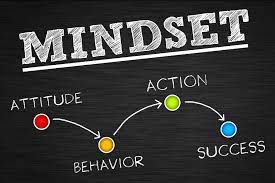Presentation skills are a valuable asset anyone can utilize whether in class, speaking at an event or presenting at work. Presentation skills are mentioned as one of the most valued transferrable skills employers desire in employees. Seventy percent of employed Americans who give presentations agree that presentation skills are critical to their success at work, according to a new Prezi survey. As critical as presentation skills are to one’s success in school or the workplace, many individuals find the activity stressful and often make crucial, yet correctable mistakes.
Four crucial presenter mistakes
- Inability to manage one’s own anxiety
- Boring the audience
- Ineffectively relating to the audience
- Delivering a one-way presentation that does not involve the audience
Avoiding the aforementioned pitfalls along with using the six tips below will help ease the fear of presenting and give you the confidence to speak publicly or present in any situation.
6 Tips to Improve Presentation Skills
1. Create a positive mindset
Practice and preparation are key to a positive mindset. They are also key to getting rid of the stress and anxiety that can accompany presenting. Approach your presentation like a game. Do your work early and study the information and scripts you have created. Arrive early to ensure set up and any props and/or audiovisual resources are in place.
2. Learn about the audience
Research your audience and what they may already know about the topic. Anticipate problems, concerns, and expectations on the topic. Use strategies such as quick questions and answers, or a show of hands. This will assist with getting a pulse on your audience.
3. Give an overview of the presentation
Prepare an outline to help you stay on track and give the audience a brief overview of what you plan to cover. Include goals and key messages you plan to deliver.
4. Make it interesting and relevant
Ask yourself would you be interested in the presentation if you were in the audience? Depending on the situation and if time allows, start with a short icebreaker to engage the audience. Be creative and use interesting visuals, such as short video clips, music, funny props, presentation slides, and handouts. When applicable, utilize the latest research, relate to current world news, use unusual applications, or best practices in another company or industry.
5. Involve the audience and stimulate discussion
Often presenters make the mistake of talking too much or too long and can lose their audience. Find opportunities to involve your audience, ask questions, and invite questions. Incorporate role play, brainstorming, and quick writing exercises to engage the audience.
6. Manage questions and answers professionally
Set the tone for your presentation and explain when questions can be asked. Show interest in the audience’s questions and answers no matter how bad you believe they are. Make eye contact and give positive verbal and nonverbal signs of communication. Before answering a question, make sure to restate the question to clarify and ensure everyone in the audience heard it. This strategy will also give you time to ponder an answer. Lastly, if you don’t know the answer, be honest and don’t guess. Perhaps, try throwing the question to the group or let the questioner know you will get back to them when you have an answer.
This Lifelete Fundamental was powered by Smart Company and Forbes see the links for more information.



